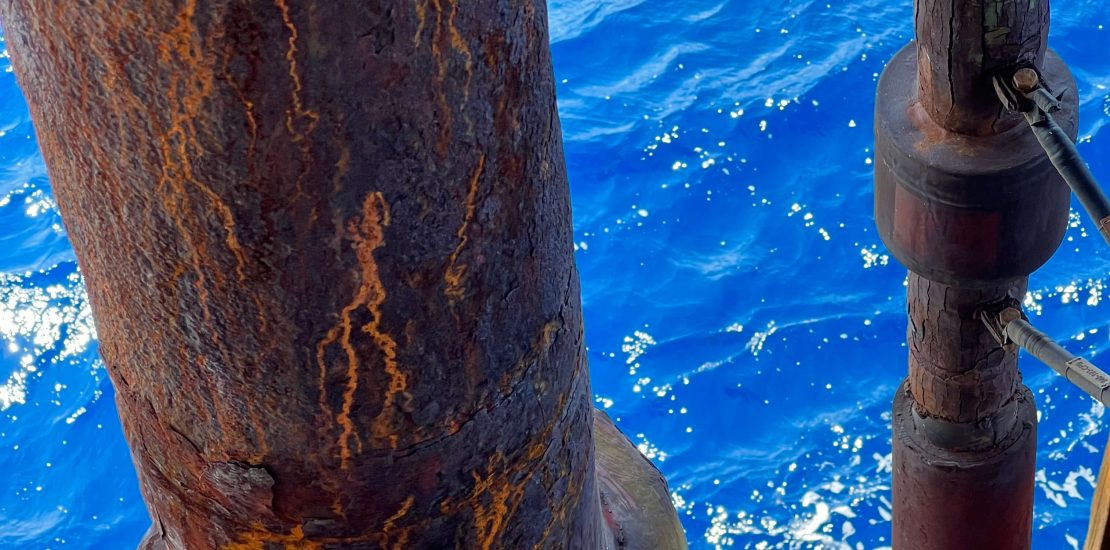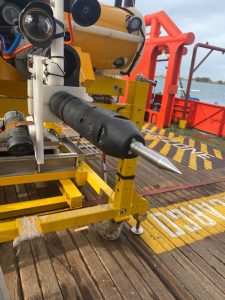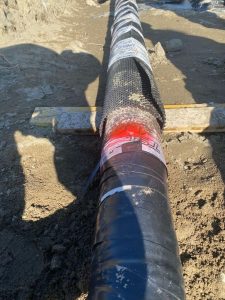Cathodic protection: what it is, how it works, risks and innovations
- November 25, 2024
- Posted by: sagest
- Category: Cathodic Protection

How do you protect metal structures immersed in marine environments from the corrosive effects of the sea? What advanced technologies are used to prevent damage to oil and gas platforms and pipelines? And how do you monitor and maintain the effectiveness of these systems over time?
We talked about this with Giuseppe Grieco, who has been working in the cathodic protection industry for 16 years, both onshore and offshore. At Sa.GEST, Joseph is responsible for all activities, from the construction of new plants to their maintenance, from electrical testing to the design of new plants or retrofits of existing ones.
What is cathodic protection?
“Cathodic protection is an essential technique for preventing corrosion of metal structures immersed in conductive environments, such as the sea — Joseph explains — It works by inducing a direct current between an anode and the metal surface to be protected (cathode), polarizing the metal and inhibiting corrosive processes.”
This method is especially important in offshore environments, where the presence of dissolved salts, oxygen and microorganisms accelerates corrosion, damaging oil platforms, pipelines and other critical infrastructure. The combined use of passive (coatings) and active (PC) protection ensures the safety and reliability of structures over time.

Passive protection and active protection, what are they?
“Passive protection creates a physical or chemical barrier that isolates the metal from the aggressive environment, using protective coatings, metallization and chemical inhibitors. — Joseph explains – Active protection, on the other hand, is applied through sacrificial anodes or impressed current systems. The cathodic(active+passive) protection system is inherently safe because, in the event of a failure of either mode, the other takes over, slowing down the corrosive processes.”
How do you monitor and maintain healthy cathodic protection systems?
“A proper and timely monitoring and maintenance plan is needed — Joseph points out — As Sa.GEST we periodically monitor electrical parameters in accordance with industry regulations. Remote monitoring technologies, allow us to acquire and transmit data in real time to a centralized control center. Dedicated software automatically analyzes the data, reporting any anomalies and enabling timely interventions. But it doesn’t end there — he continues -Maintenance includes visual inspections, monitoring of electrical parameters and control of the operation of plant components. In addition, extraordinary maintenance activities such as replacement of ineffective components, repair of electrical connections and technology upgrades are carried out.”
A project of Sa.GEST?
“One of our most recent projects was the retrofit of the cathodic protection system of the GELA1 offshore platform owned by ENI. — Giuseppe tells -This platform, launched in 1964 and located about 2 km from the coast, is part of ENI’s new CASSIOPEA project, which includes a new subsea natural gas extraction system, new offshore pipelines and an onshore processing plant.”
The implementation of cathodic protection in offshore environments presents many challenges: aggressive marine conditions, complexity and size of structures, difficulties in monitoring and maintenance, and logistics for accessing the structures.

How do you cope with risks, difficulties, and challenges in cathodic protection?
“At Sa.GEST we meet these challenges with experienced and certified staff — Giuseppe points out — collaborating with clients and national partners thus ensuring effective implementation of PC systems.”
What are the main innovations in cathodic protection?
“Artificial intelligence is also revolutionizing our field, improving electrical surveys, facility management and predictive maintenance. In addition — he continues — clouds enable real-time data collection and analysis. Innovations in anode materials, high-efficiency coatings, potential probes and T/R switching units are significantly improving cathodic protection systems.”
